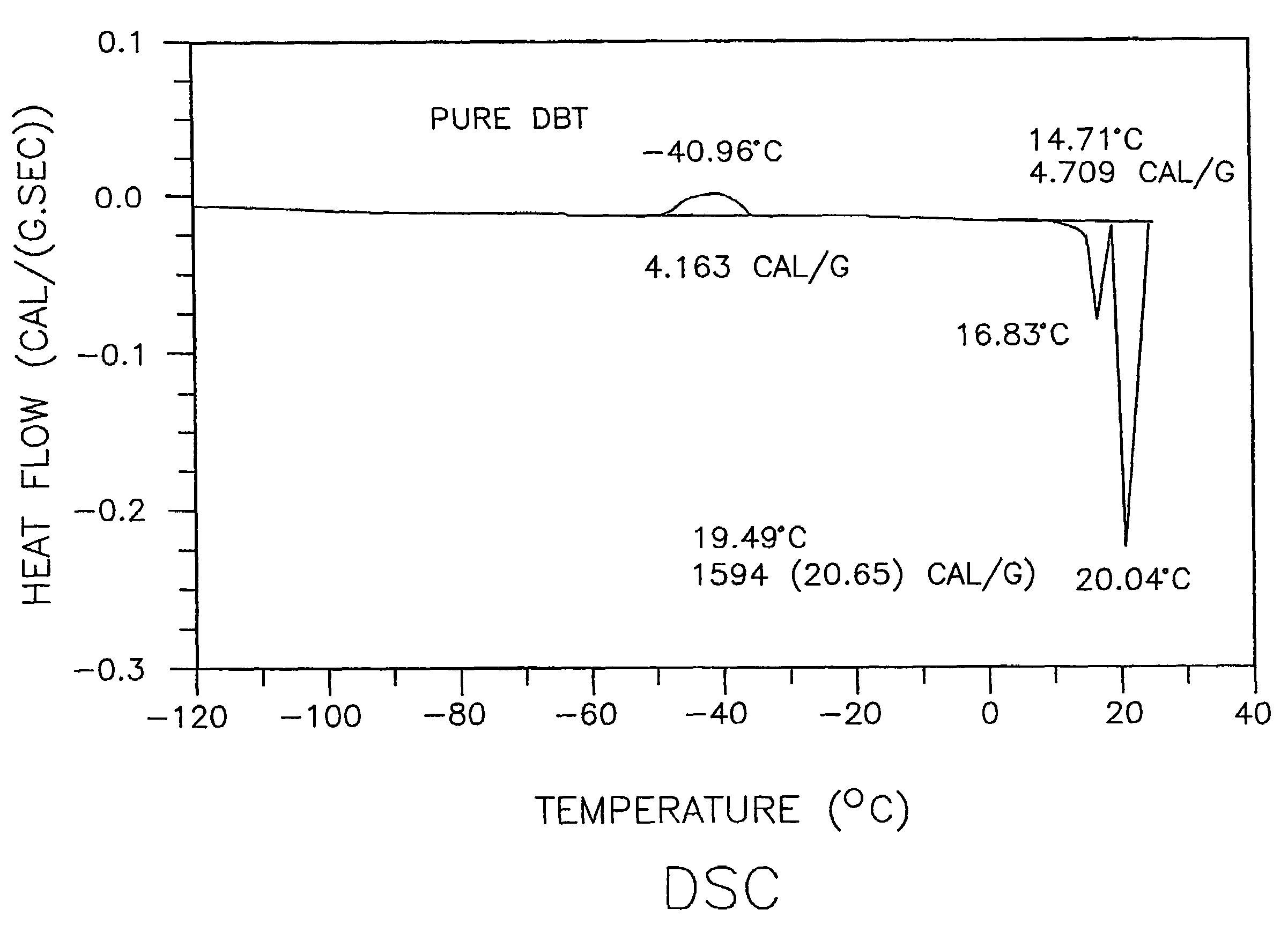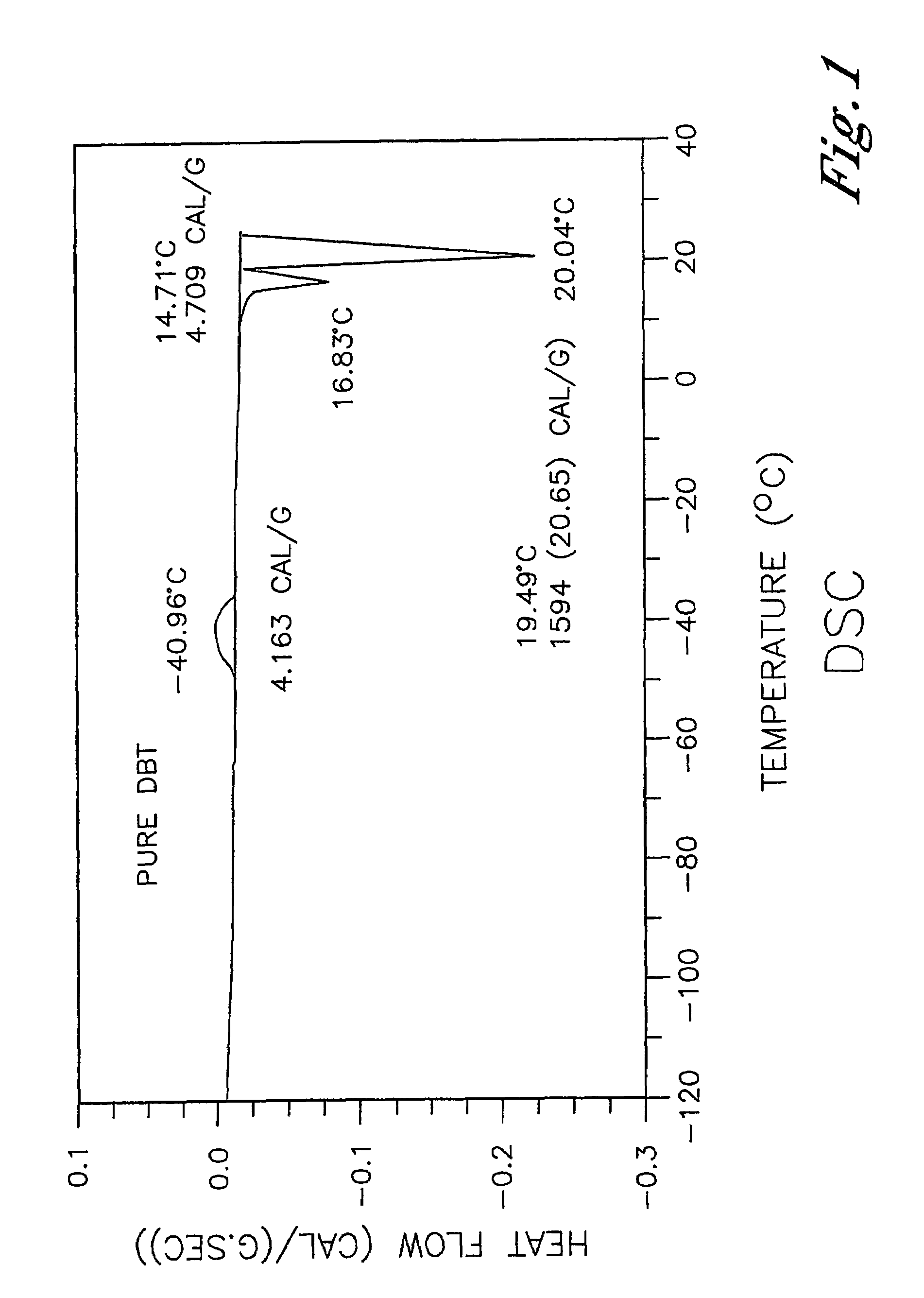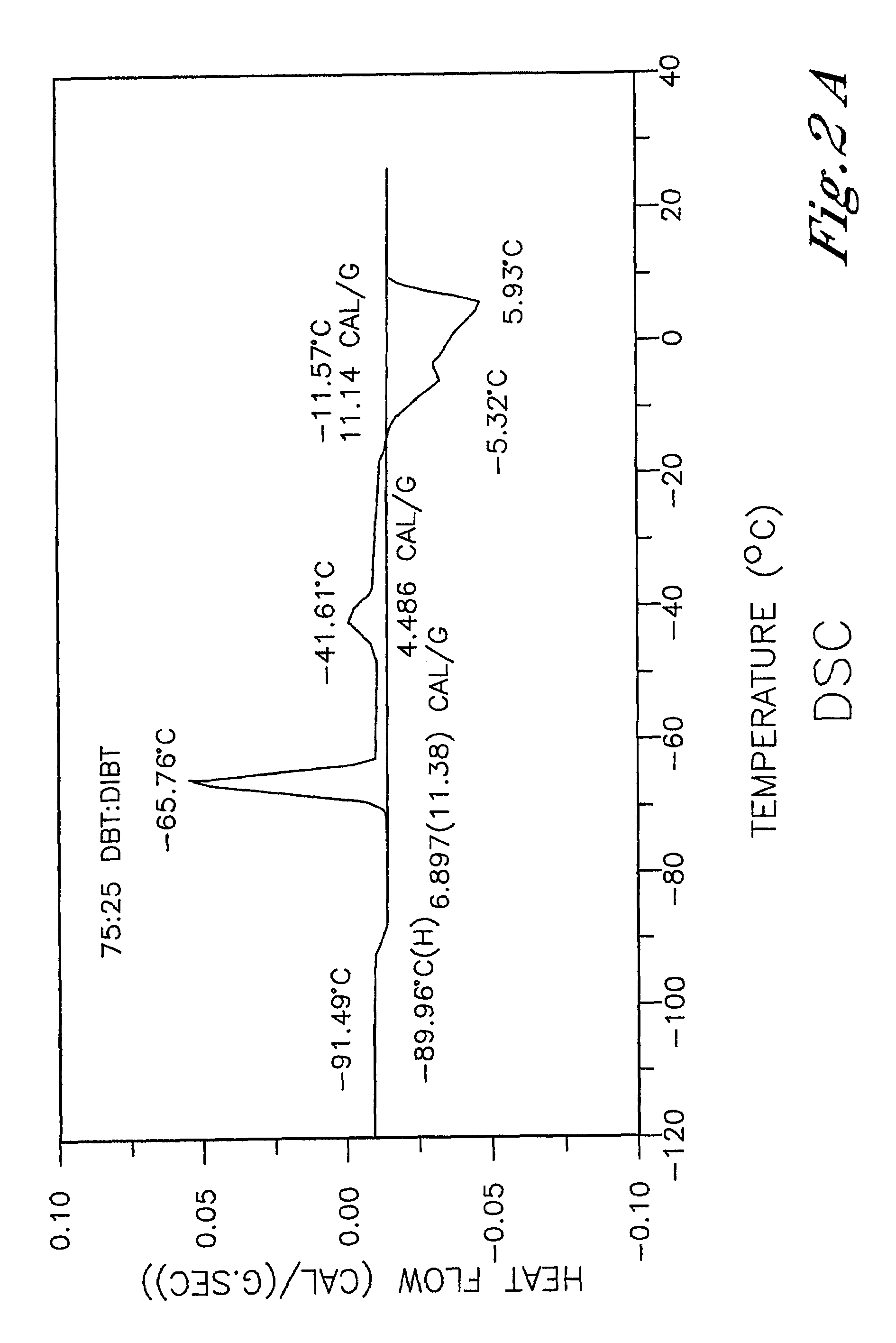Low-melting mixtures of di-n-butyl and diisobutyl terephthalate
a technology of diisobutyl terephthalate and diisobutyl terephthalate, which is applied in the preparation of carboxylic acid esters, chemistry apparatus and processes, and organic chemistry. it can solve the problems of increasing the cost of using these products, and the possibility of freezing these products at cold temperatures
- Summary
- Abstract
- Description
- Claims
- Application Information
AI Technical Summary
Problems solved by technology
Method used
Image
Examples
example 1
[0020]The reaction was conducted in accordance with the chemical equation generally illustrated above on page 3 and was designed to produce a product derived from a 50:50 mole percent mixture of n-butanol and isobutanol.
[0021]The reactor system was charged with 436.9 g (2.25 mol, MW=194.19) of dimethyl terephthalate, 207.5 g (2.8 mol, MW=74.12) of n-butanol, 207.5 g (2.8 mol, MW=74.12) of isobutanol and 223 ppm (0.19 g) of tetraisopropoxy titanate (TIPT). The reaction progress is summarized in the Table 1 below:
[0022]
TABLE 1Take-Take-ReactionBaseoffoffTimeTempTempVol.Time(hrs)C.C.mLComments 7:05— 25240 8:000.0119980Start reaction time;set take-off at 8:300.5111655 9:001.01126525 9:301.5115664510:002.0117677010:302.5119678511:003.01216711011:303.51256613012:004.01296614012:304.51277014413:005.01306515013:305.51386616014:006.01436616814:306.51476817015:007.014966175Shutoff
The product was stripped as summarized in Table 2 below:
[0023]
TABLE 2Take-StripBaseoffTake-StrippingTimeTempTempo...
example 2
[0025]The reaction described in Example 1 was repeated to produce a product derived from a 75:25 mole percent mixture of n-butanol and isobutanol, respectively. The reactor system was charged with 233 g (1.2 mol, MW=194.19) of dimethyl terephthalate, 200.1 g (2.78 mol, MW=74.12) of n-butanol, 66.7 g (0.9 mol, MW=74.12) of isobutanol and 220 ppm (0.11 g) of TIPT. The reaction progress is summarized in the Table 3 below:
[0026]
TABLE 3Take-Take-ReactionBaseOffOffTimeTempTempVolumeTime(hrs)C.C.(ml)Comments 7:00— 2625 0Heating 8:100.011365 0Start reaction time and take-off at 20% 8:400.51136520 9:401.5119655510:102.0123667010:402.5128657811:103.0131668812:104.0133669213:105.0134669314:406.5134669315:407.51346693Shut-off; product as X-29455-162-01; take-off as162-02 wt-70.1 g
[0027]The product was stripped as summarized in Example 1 above and isolated as a clear liquid after neutralization, drying, carbon treatment and final filtration.
example 3
[0028]The reaction described in Example 1 was repeated to produce a product derived from a 25:75 mole percent mixture of n-butanol and isobutanol, respectively. The reactor system was charged with 233 g (1.2 mol, MW=194.19) of dimethyl terephthalate, 66.7 g (0.9 mol, MW=74.12) of n-butanol, 200.1 g (2.7 mol, MW=74.12) of isobutanol and 280 ppm (0.14 g) of TIPT. The reaction progress is summarized in the Table 4 below:
[0029]
TABLE 4Take-Take-ReactionBaseOffOffTimeTempTempVolTime(hrs)C.C.(ml)Comments 8:00—102220 8:300.0116930Start reaction time; turnon take-off @ @ 20% 9:000.5109650 9:301.0106640Lifter not working; shut-off and replaced10:15 84250Began heating10:551.0106640Start take-off at 20%11:552.0112641212:553.0116662813:253.5116663413:554.0116664214:254.51176550Base heater output @ 5314:555.0118655715:255.51196568Shutoff 8:255.51206468Start take-off at 20% 9:256.51256578 9:557.0126668210:257.5128668511:258.5130668812:259.5132669212:5510.0130679213:2510.5130669314:2511.51306693Shu...
PUM
| Property | Measurement | Unit |
|---|---|---|
| Percent by mole | aaaaa | aaaaa |
| Volume | aaaaa | aaaaa |
| Volume | aaaaa | aaaaa |
Abstract
Description
Claims
Application Information
 Login to View More
Login to View More - R&D
- Intellectual Property
- Life Sciences
- Materials
- Tech Scout
- Unparalleled Data Quality
- Higher Quality Content
- 60% Fewer Hallucinations
Browse by: Latest US Patents, China's latest patents, Technical Efficacy Thesaurus, Application Domain, Technology Topic, Popular Technical Reports.
© 2025 PatSnap. All rights reserved.Legal|Privacy policy|Modern Slavery Act Transparency Statement|Sitemap|About US| Contact US: help@patsnap.com



